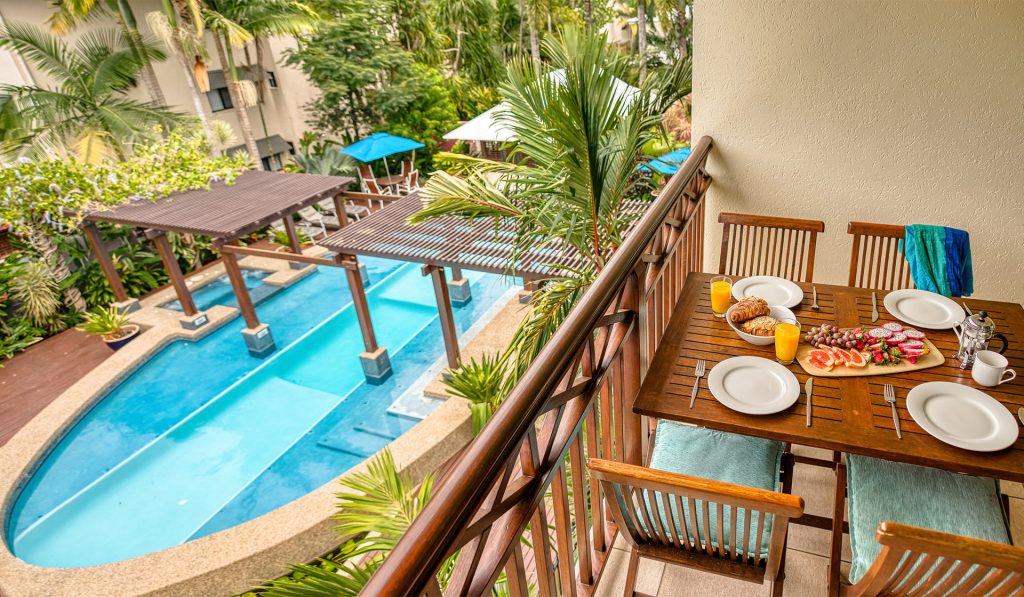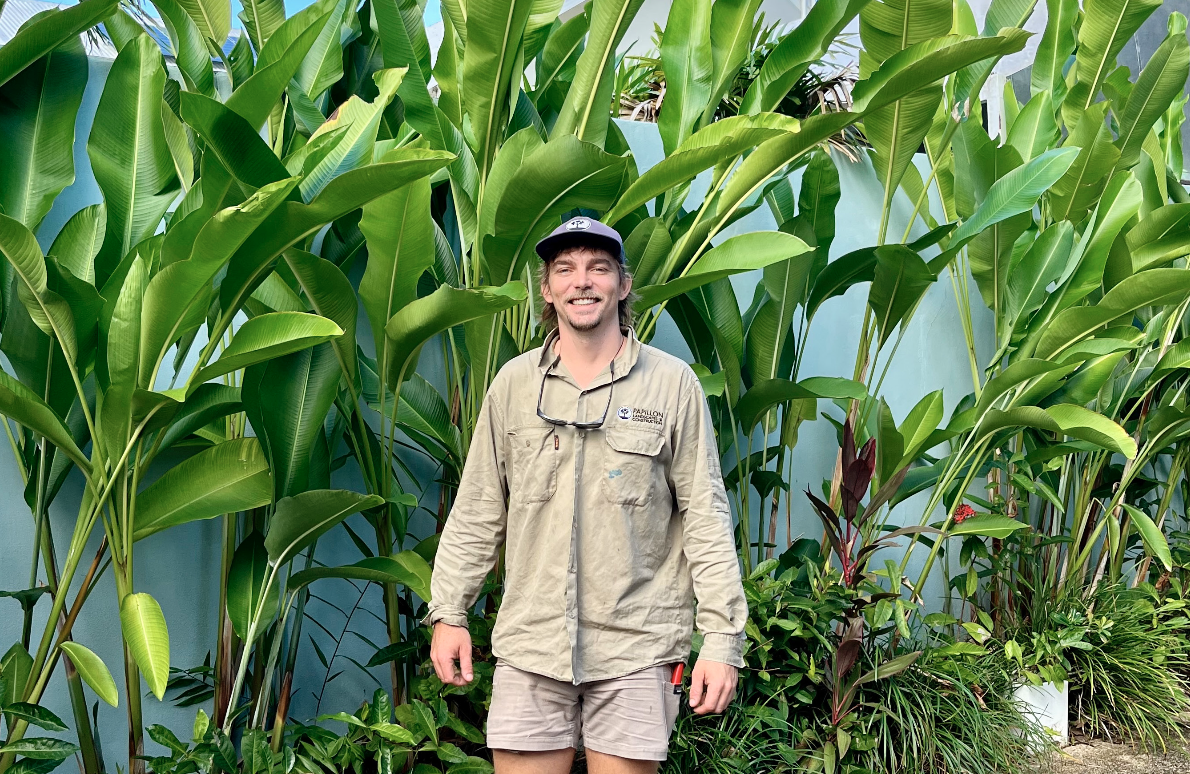The Hidden Costs of Tropical Property Investments: Paradise Comes with a Price
In the tropical north, weather patterns can trip up the unsuspecting investor, with extra costs on everything from pools and aircon to insurance and garden design
There’s a lot to think about when purchasing an investment property, and location is often at the top of the list. This will crucially affect rentability, income and ultimately, sale price. Investors also need to factor in its knock-on effect on maintenance costs. And nowhere is that more apparent than in the Tropics.
The Wet Tropics World Heritage Area accounts for the land between Townsville and Cooktown on the north-east coast of Queensland, covering an area of more than 8000km. Within this, FNQ holiday hotspots such as Mission Beach, Cairns, Palm Cove and Port Douglas have become sought-after investment addresses in the post-pandemic era. Ah, the Aussie Tropics! Year- round sunshine, a holiday lifestyle and (compared to our more southerly cities) affordability. So far, so idyllic.
But what else do you need to know before you put down that deposit? Here are some of the ongoing costs involved in investing in a tropical dream.
Growing pains
Most landlords in the Tropics include regular garden (and irrigation) maintenance as part of the monthly rent. Mitch Sullivan, horticulturalist with Papillon Landscapes and Construction, works on properties in Cairns, the Daintree and everywhere in between.
“Anyone who’s been around long enough, knows how hard it can be,” he says. “People from down south often aren’t aware of the rate at which everything grows. If you don’t have the knowledge, or the time, it can get away from you really quickly.”
And if you have paying guests, you need to keep your corner of paradise in tip-top shape.
“Occasionally you may get a tenant who says they want to look after the gardens but that usually doesn’t go too well,” he says.
Landscaping companies charge from around $120 for a fortnightly service, depending on the size and scope of your block. It’s always good to get a quote upfront.
Keep it covered
Extreme weather patterns all over Australia in the past few years have made it clear that adequate insurance is a no-brainer. And when you’re buying property in a region that’s at risk of cyclones for six months of the year, it’s especially pertinent. According to financial comparison site Canstar’s calculation of average annual home and contents insurance premiums across Australia in 2021, North Queensland’s premium more than doubles the Queensland average and approximately triples the other states and territories (except NT). While the risks are minimised by the fact that the properties are built to code — ie to withstand a cyclone — it isn’t a foolproof system, and the wise investors will have their properties checked prior to cyclone season for signs of deterioration.
How’s the humidity?
With winter lows at around 25 degrees and hot, humid conditions in the wet season, aircon is a must. Jason and Anne Moore (pictured below) are resident managers at Freestyle Resort in Port Douglas, where air conditioning is a responsibility of the individual apartment owner/investor.
“Aircon units have a relatively short shelf life here because they’re almost constantly in use,” says Jason. “They often don’t outlast the warranty period so it’s something else for buyers to factor in.”
Humidity is also responsible for mould, which can be a major issue in the tropics, especially if a property is left vacant for periods of time during the wet season.
“If you leave a place locked up for eight weeks you may well come back to find it’s turned green,” says Jason. “Once it’s in, mould is not easy to get rid of. Removal is an expensive exercise.”
In the swim
Not every property has a pool but it’s one of the most popular add-ons for a rental in the Tropics, so let’s assume your investment has one. As with gardening, pool maintenance is generally built into the rent. Holiday makers expect a pristine pool, and you probably don’t want to trust long-term tenants to maintain the chlorine levels and keep the filter running.
Daryl Taylor owns and runs Happy Pools, servicing pools from the Northern Beaches of Cairns northwards up the coast.
“Most landlords have a pool maintenance service,” he says. “It makes sense up here because people swim pretty much all year round, so you need it to be operating perfectly. In the wet season, we get an enormous amount of rain, and this dilutes the chemicals and washes the garden into the pool.”

Happy Pools offers different tiers of service for rentals from monthly and fortnightly regulars up to several times a week.
“Holiday properties need more attention because guests are in the pool a lot — people are leaving beer bottles around and kids are weeing in there — so we need to service it between each booking.”
Expect to pay around $45 (plus chemicals) for a fortnightly service, depending on your pool.
This stylish family home combines a classic palette and finishes with a flexible floorplan
Just 55 minutes from Sydney, make this your creative getaway located in the majestic Hawkesbury region.
As Paris makes its final preparations for the Olympic games, its residents are busy with their own—packing their suitcases, confirming their reservations, and getting out of town.
Worried about the hordes of crowds and overall chaos the Olympics could bring, Parisians are fleeing the city in droves and inundating resort cities around the country. Hotels and holiday rentals in some of France’s most popular vacation destinations—from the French Riviera in the south to the beaches of Normandy in the north—say they are expecting massive crowds this year in advance of the Olympics. The games will run from July 26-Aug. 1.
“It’s already a major holiday season for us, and beyond that, we have the Olympics,” says Stéphane Personeni, general manager of the Lily of the Valley hotel in Saint Tropez. “People began booking early this year.”
Personeni’s hotel typically has no issues filling its rooms each summer—by May of each year, the luxury hotel typically finds itself completely booked out for the months of July and August. But this year, the 53-room hotel began filling up for summer reservations in February.
“We told our regular guests that everything—hotels, apartments, villas—are going to be hard to find this summer,” Personeni says. His neighbours around Saint Tropez say they’re similarly booked up.
As of March, the online marketplace Gens de Confiance (“Trusted People”), saw a 50% increase in reservations from Parisians seeking vacation rentals outside the capital during the Olympics.
Already, August is a popular vacation time for the French. With a minimum of five weeks of vacation mandated by law, many decide to take the entire month off, renting out villas in beachside destinations for longer periods.
But beyond the typical August travel, the Olympics are having a real impact, says Bertille Marchal, a spokesperson for Gens de Confiance.
“We’ve seen nearly three times more reservations for the dates of the Olympics than the following two weeks,” Marchal says. “The increase is definitely linked to the Olympic Games.”

Getty Images
According to the site, the most sought-out vacation destinations are Morbihan and Loire-Atlantique, a seaside region in the northwest; le Var, a coastal area within the southeast of France along the Côte d’Azur; and the island of Corsica in the Mediterranean.
Meanwhile, the Olympics haven’t necessarily been a boon to foreign tourism in the country. Many tourists who might have otherwise come to France are avoiding it this year in favour of other European capitals. In Paris, demand for stays at high-end hotels has collapsed, with bookings down 50% in July compared to last year, according to UMIH Prestige, which represents hotels charging at least €800 ($865) a night for rooms.
Earlier this year, high-end restaurants and concierges said the Olympics might even be an opportunity to score a hard-get-seat at the city’s fine dining.
In the Occitanie region in southwest France, the overall number of reservations this summer hasn’t changed much from last year, says Vincent Gare, president of the regional tourism committee there.
“But looking further at the numbers, we do see an increase in the clientele coming from the Paris region,” Gare told Le Figaro, noting that the increase in reservations has fallen directly on the dates of the Olympic games.
Michel Barré, a retiree living in Paris’s Le Marais neighbourhood, is one of those opting for the beach rather than the opening ceremony. In January, he booked a stay in Normandy for two weeks.
“Even though it’s a major European capital, Paris is still a small city—it’s a massive effort to host all of these events,” Barré says. “The Olympics are going to be a mess.”
More than anything, he just wants some calm after an event-filled summer in Paris, which just before the Olympics experienced the drama of a snap election called by Macron.
“It’s been a hectic summer here,” he says.

AFP via Getty Images
Parisians—Barré included—feel that the city, by over-catering to its tourists, is driving out many residents.
Parts of the Seine—usually one of the most popular summertime hangout spots —have been closed off for weeks as the city installs bleachers and Olympics signage. In certain neighbourhoods, residents will need to scan a QR code with police to access their own apartments. And from the Olympics to Sept. 8, Paris is nearly doubling the price of transit tickets from €2.15 to €4 per ride.
The city’s clear willingness to capitalise on its tourists has motivated some residents to do the same. In March, the number of active Airbnb listings in Paris reached an all-time high as hosts rushed to list their apartments. Listings grew 40% from the same time last year, according to the company.
With their regular clients taking off, Parisian restaurants and merchants are complaining that business is down.
“Are there any Parisians left in Paris?” Alaine Fontaine, president of the restaurant industry association, told the radio station Franceinfo on Sunday. “For the last three weeks, there haven’t been any here.”
Still, for all the talk of those leaving, there are plenty who have decided to stick around.
Jay Swanson, an American expat and YouTuber, can’t imagine leaving during the Olympics—he secured his tickets to see ping pong and volleyball last year. He’s also less concerned about the crowds and road closures than others, having just put together a series of videos explaining how to navigate Paris during the games.
“It’s been 100 years since the Games came to Paris; when else will we get a chance to host the world like this?” Swanson says. “So many Parisians are leaving and tourism is down, so not only will it be quiet but the only people left will be here for a party.”
This stylish family home combines a classic palette and finishes with a flexible floorplan
Just 55 minutes from Sydney, make this your creative getaway located in the majestic Hawkesbury region.

















